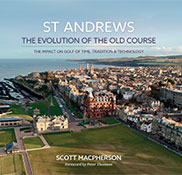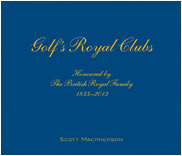GOLF CHAMPIONSHIPS ON SMGD COURSES:
At Close House – Colt Course. Sept 2017. A prestigious European Tour Championship hosted by Lee Westwood.
Broadcast worldwide from Royal Wellington Golf Club, NZ. October 2017. WOW!
The legacy continues.
Co-hosted at the award-winning Millbrook Resort near Queenstown, NZ. 2014 – 2023.
Cross Hazards
Edited Version for THE CUT. September 2007.
Cross hazards are those placed on a diagonal angle to the line of play, and are perhaps the greatest and most fair of hazards. They can be placed to catch either a tee shot or a second shot and provide a strategic test for a shot of any length. As Donald Ross wrote, ‘It affords a fair test for any length of shot. If placed properly, the longer the carry taken, the greater the advantage gained.’ So where should they be placed, and how should they look?
Before we discuss the placement, perhaps I should start by explaining why this article is entitled ‘cross hazards’ and not ‘cross bunkers’. It is true that diagonal hazards most often take the form of bunkers, but there are some notable exceptions where other types of hazards are used to achieve the same effect. And having recently watched the British Open at Carnoustie, the Barry Burn that snakes its way around 17th and 18th, is a very good example of a waterway being used to define the diagonal. Other diagonal hazards can be as simple as raised grassy banks, or as dramatic as the Pacific Ocean – like on the 18th hole at Pebble Beach. Deciding on the form of the cross hazard depends on the terrain, and what natural features exist on the site. If the site is not blessed with a river, stream, lava flow, etc, slopes and bunkers must be used. Of course, bunkers can be used in combination with more dramatic features also. This of gives the greatest visual impact.
Whatever form the cross hazard may take, I believe they are most effective when they can be seen. Hiding some portions of the hazard is fine, but by ensuring a degree of visibility, greater mental and strategic impacts can be made. This may be in terms of disturbing the golfer’s depth perception and luring them into a false stroke, or posing a challenge and rewarding a brilliant shot. If the cross hazard is a bunker, ensuring some sand can be seen gives greater visual contrast against the colour of the turf.
Having decided on the form of the hazard, the distance from the tee, angle, width and elevation of the hazard becomes important. The art is to extract the maximum possible strategic merit from the design to provide golfers with greatest interest. Golfers must be given options, an opportunity to show their skills, and be made to make decisions and solve problems. So the hazard must be able to be crossed or played around. Ideally the angle of the cross hazard should not be too perpendicular or parallel to the line of play. Generally 30 to 45 degrees may be seen as ideal.
The placing of cross hazards is not easy. The best are placed where golfers want to be, or on a line golfers want to go. If the hazards are bunkers, staggering them and having them offset can help considerably when they are positioned in the first landing area, but when the hazard is located to catch a second shot – either on Par 4 or a Par 5– positioning them to challenge all types of golfers is very difficult. Equally, positioning cross bunkers for summer play when the fairways can be hard and fast is different to winter when the turf can be soft.
As regards to size, if the hazard is small in real terms, it can be made bigger in actual terms by sculpting the ground around it so golf balls are funnelled into the hazard. This is a common characteristic of the great bunkers on many old links, such as St Andrews, Troon, Prestwick etc, and it makes them significantly harder to avoid.
The best cross hazards draw play towards them. The closer one gets, the greater the advantage. But should one become brazen, one’s fingers may be burnt. By placing bunkers on the corners of holes, close in on the sides of fairways at the turning point, the perfect shot is rewarded and the imperfect punished.
Cross bunkers provide a great deal of excitement and satisfaction. When positioned strategically on angles at a diagonal to the line of play, they make for great golf holes because they do what all golfing features should do – they make golfers think. And as the legendary golf architect, George C. Thomas wrote, “Strategy is the soul of golf. The spirit of golf is to dare the hazards and by negotiating them safely, reap a rich reward.”
Words of the Wise: “Strategy is the soul of golf. The spirit of golf is to dare the hazards and by negotiating them safely, reap a rich reward.” – George C. Thomas, legendary golf architect.
AWARDS
 Winner
Winner
Excellence in Compliance Award
Royal Wellington Golf Club
 Scott awarded by GEO as a Sustainable Golf Champion
Scott awarded by GEO as a Sustainable Golf Champion
PUBLICATIONS
 St Andrews
St Andrews
The Evolution of the Old Course
by Scott Macpherson
TESTIMONIALS
"During both the design and construction phases their can-do attitude to problem solving was refreshing".
Ben O'Malley, Millbrook Country Club, NZ



